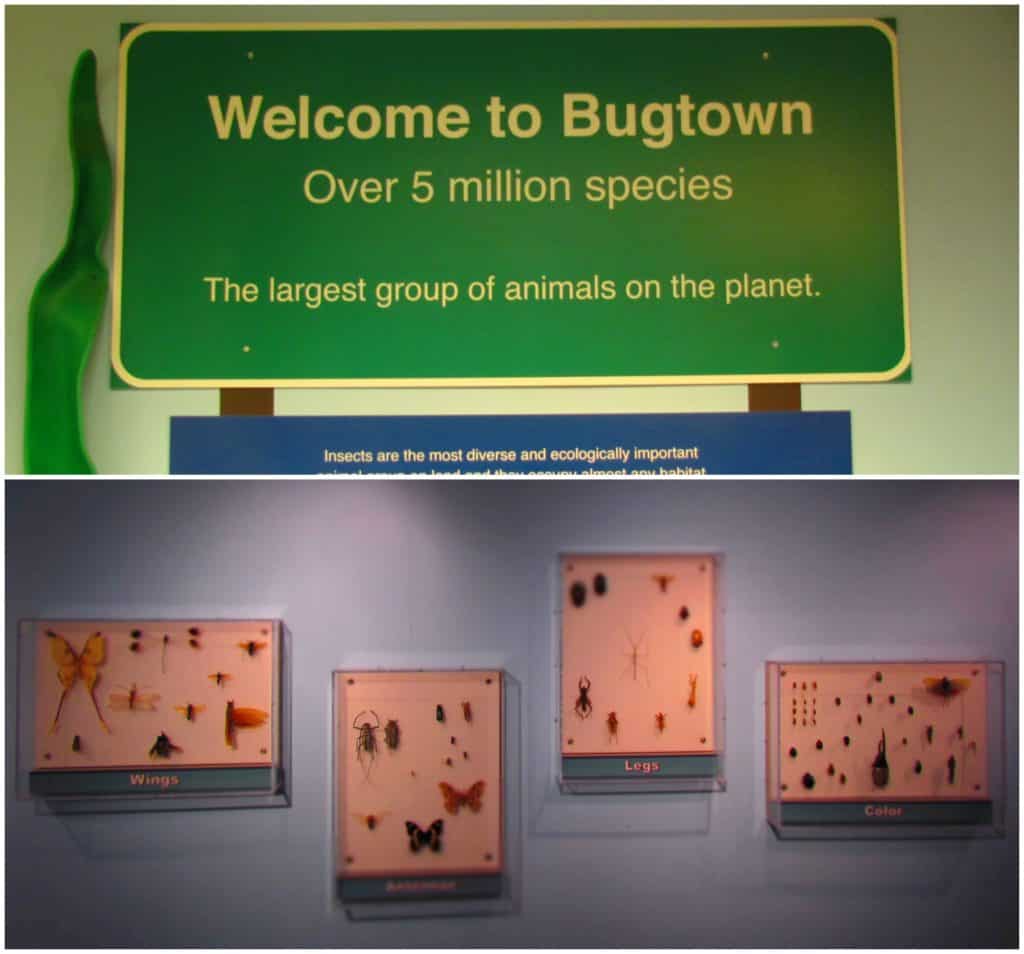
Most Kansas Citians have visited Lawrence, Kansas at least once in their life. For us, it has been quite a few times, and especially when our daughter worked at Kansas University. When we decided to plan a day-filled excursion, we knew our daughter would enjoy accompanying us to her old homestead. Our first stop was set for the KU Natural History Museum, which is on the school’s campus. The weather ended up being very cooperative, and we were looking forward to a great day of exploring.
Don’t Let It Bug You
There are multiple entrances to the museum, and the one we chose brought us in by Bugtown. This area is home to displays focused on the most numerous inhabitants of our planet. The room that houses this exhibit has a two seat theater, where you can catch a short run feature on bugs in media. It was amazing to see just how many movies have had insects as a theme. Many are the sci-fi shows from the 1950’s and 60’s. Of course, we all remember some of the more recent shows like Arachnophobia.
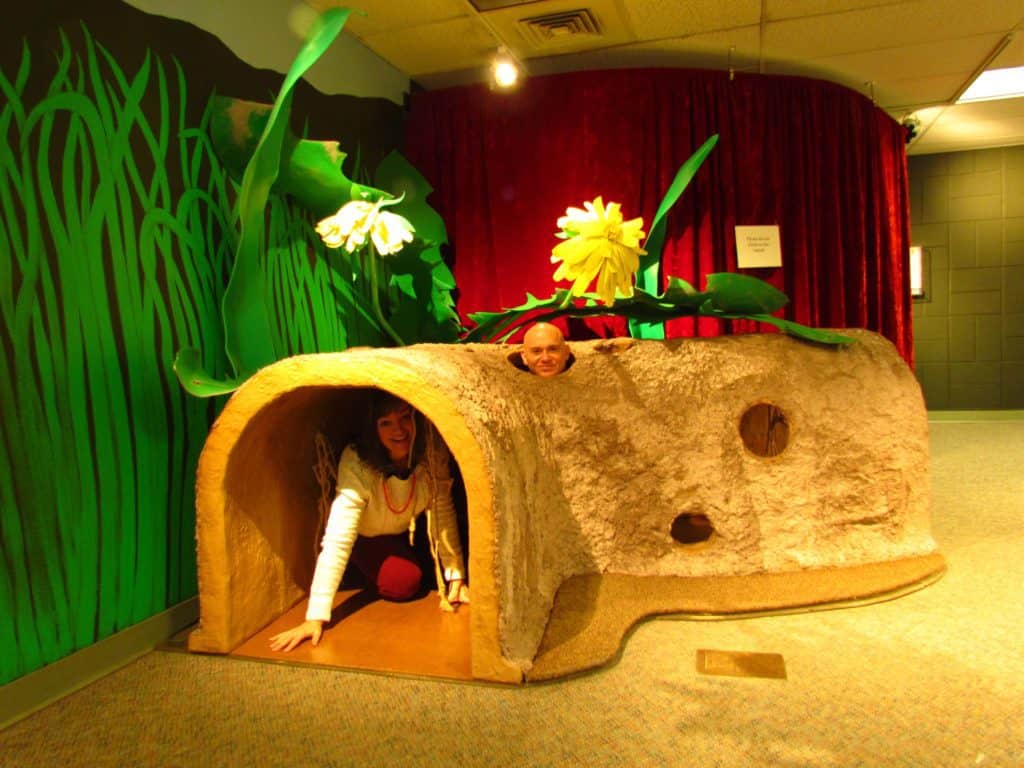
While the area is certainly designed to appeal to a younger crowd, it didn’t stop us from enjoying it. We were even able to squeeze into an ant trail, which made us feel like we had been shrunk.

Kansas Was An Ocean
It is no stretch to imagine the bulk of the Midwest as a prehistoric ocean. The amount of fossils discovered throughout central and western Kansas are amazing. We love trying to imagine the look of these creatures when they were alive. It always seems like they looked angry, but I imagine much of it came from self-preservation.

Something that is new since our last visit, are the stickers that suggest ways to increase interactive participation with the exhibits. We saw some kids that were happy to attempt to act out the suggested moves on each sticker. As a matter of fact, there were even some adult kids who were joining in on the fun.
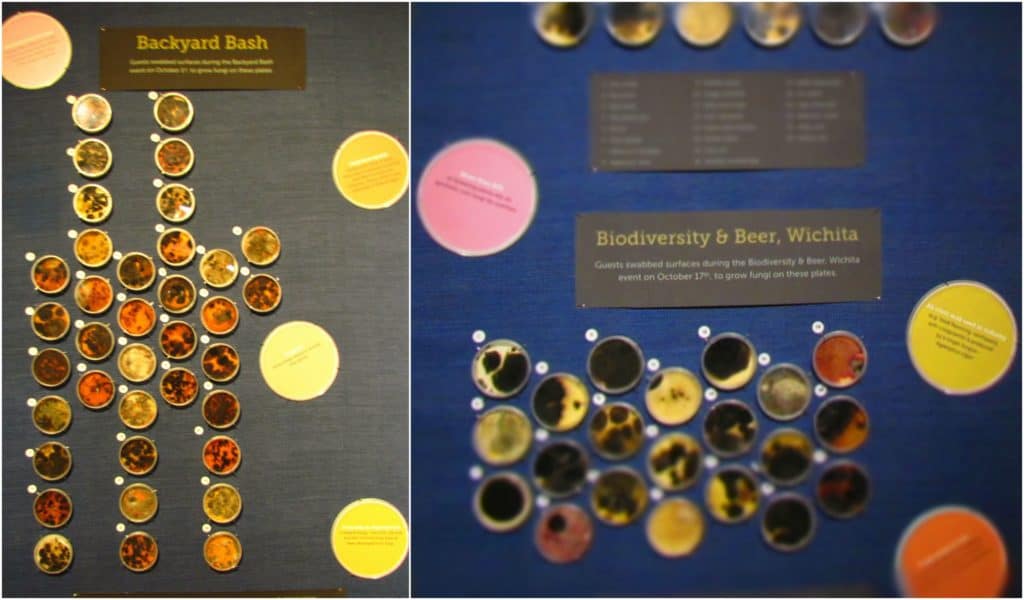
Ewww, Gross!
Part of the fun of museums is the eye opening information gleaned from exhibits. While the fossils are always interesting, we still like to see new, and unusual displays. The KU Natural History Museum has that covered with the next area we discovered. In this unique display, they showcase a variety of petri dishes that contain cultures from germs gathered off various objects. Now most wouldn’t be surprised to see a multitude of germs on places that are touched by a multitude of people. Things like door handles or countertops are breeding grounds for these germy soups. What was alarming were the cultures collected in more personal places like; inside purses, shoes, and even beards. After working through this area, we were all ready to wash our hands.
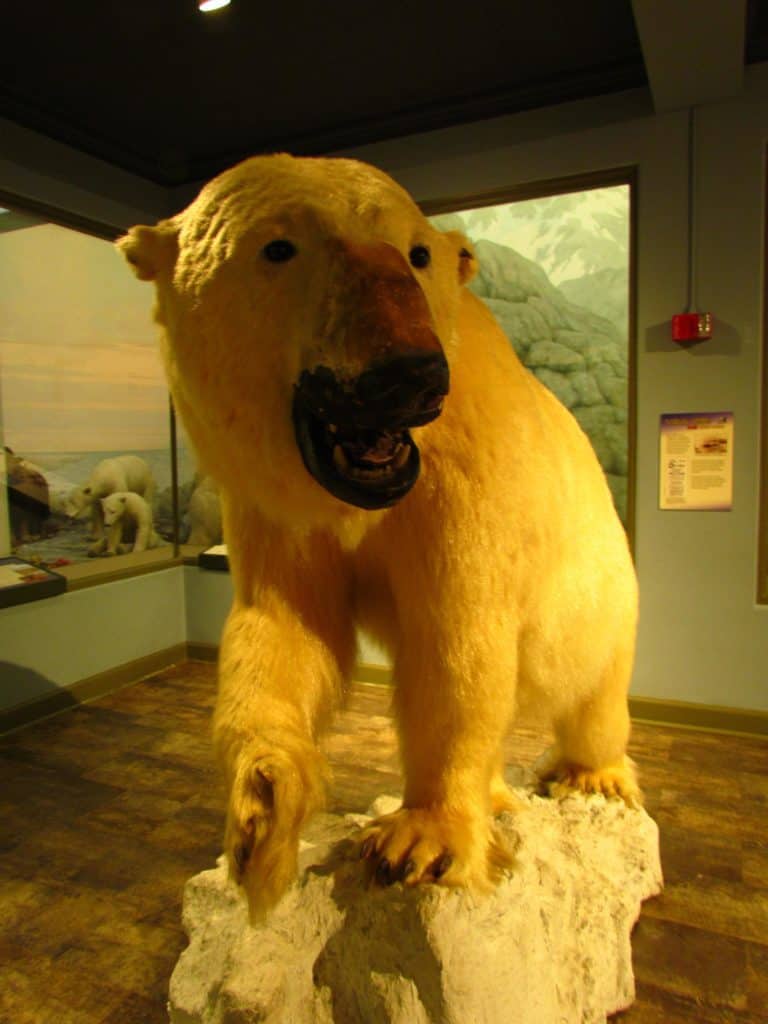
Basic Beginnings at KU Natural History Museum
The year was 1864, and a newly designated state university had arrived on the landscape. One of the charter decrees (by the Kansas legislature) was a compilation of natural history. This daunting task was worked on for the next forty years, and in 1903 Duche Hall was unveiled with its panoramic wildlife displays. These are still viewed with wonder by visitors 115 years later.

We still enjoy examining the display cases on each visit, and seem to discover little specimens that we may have overlooked on previous stops. It is amazing to think that the work was done over a century ago, and they still retain their lifelike presentation. One addition to this area is the same type of stickers that we found in the fossil exhibits. Here we were once again tempted to imitate the creatures found inside the displays.
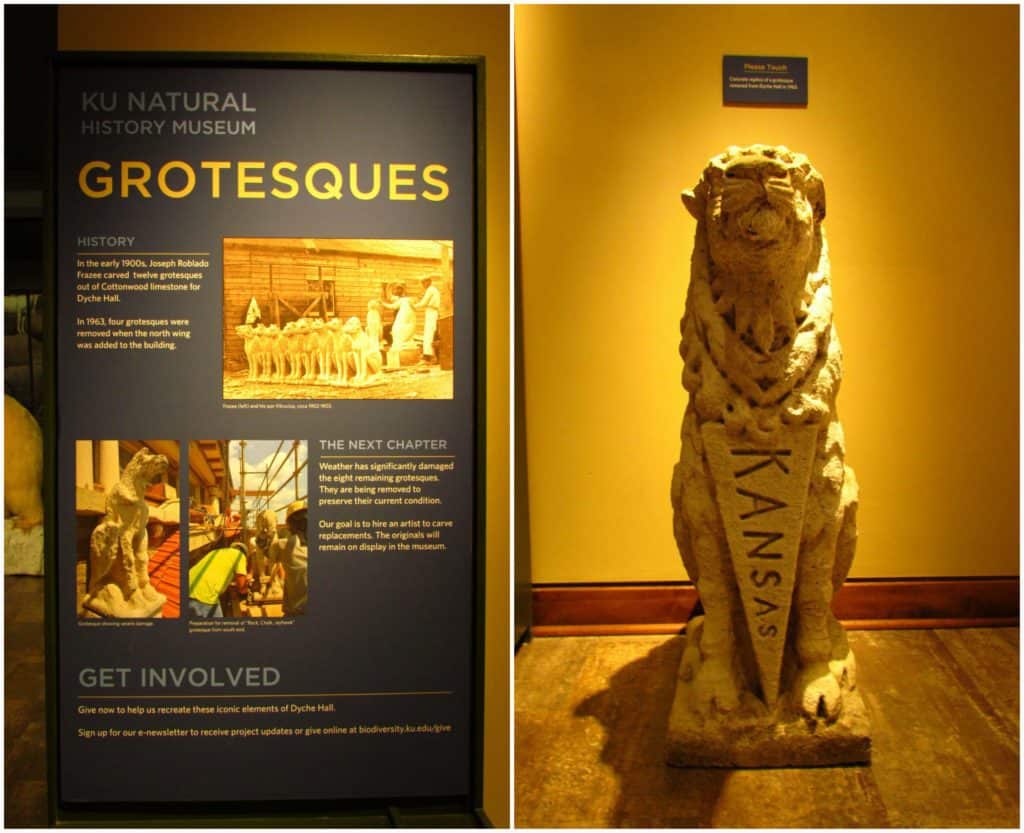
Preserve The Grotesques
Back at the turn of the 20th Century, an artist named Joseph Roblado carved a dozen “grotesques” out of slabs of Kansas limestone. These statues were used to decorate Dyche Hall. They have stood the weather and climate changes through the years (except for four that were removed for a building addition). As they have weathered, their details have eroded with time. A decision was made to take them down (to preserve what details remain), and have an artist carve replicas to replace them. The originals will be displayed in the museum, once they have been preserved.
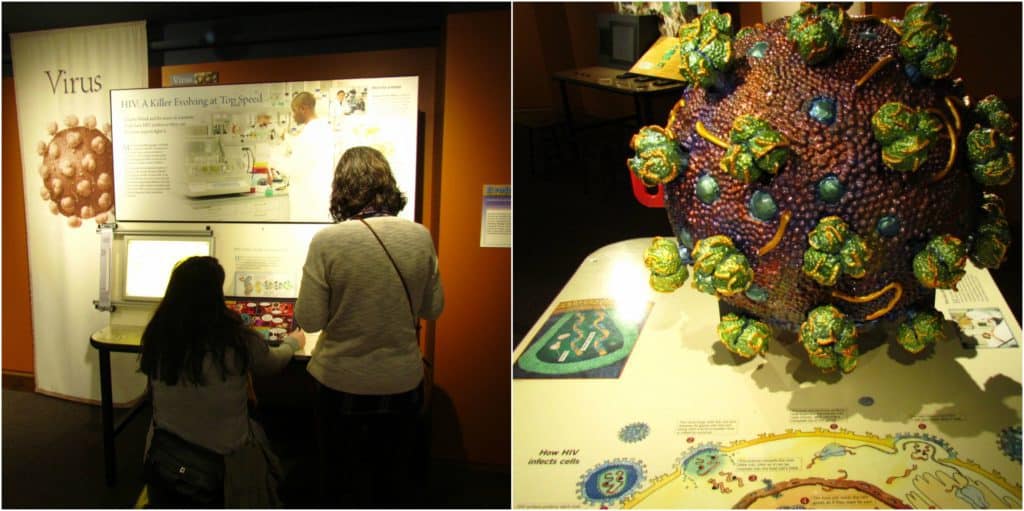
A Contagious Situation
As we continued up another floor, we found the display on microbes and viruses. In this area we found displays that offered information on the microbial specimens that we may encounter during our lifetime. While some may be invasive and dangerous (think HIV), others are imperative for a healthy life (microbes are packed in our stomachs). This set of exhibits were extremely detailed and informative, so be sure to save some time. After finishing up with this area, we were now ready to work our way from the KU campus into the main portion of town. Our next few stops would all take place on Massachusetts Street, which is a high energy, vibrant portion of this Midwestern college city. Be sure to join our mailing list, so you don’t miss out on any of the future articles about Lawrence.


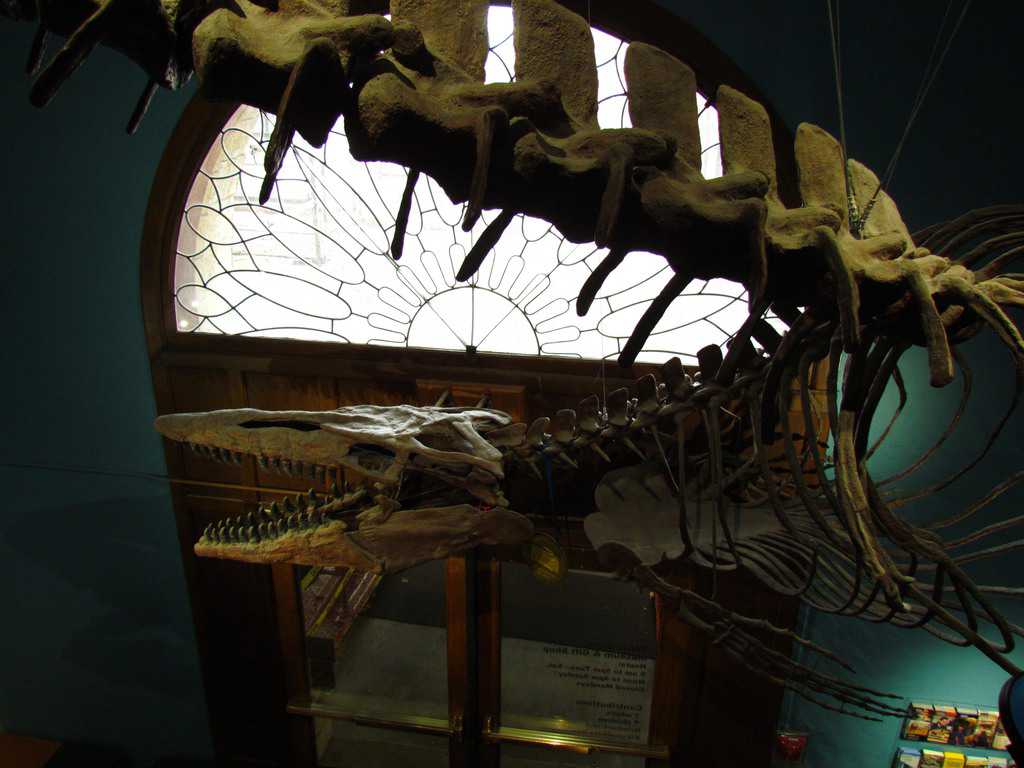
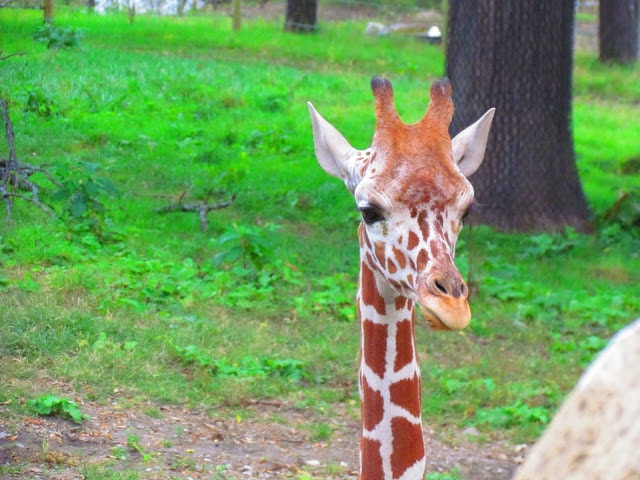
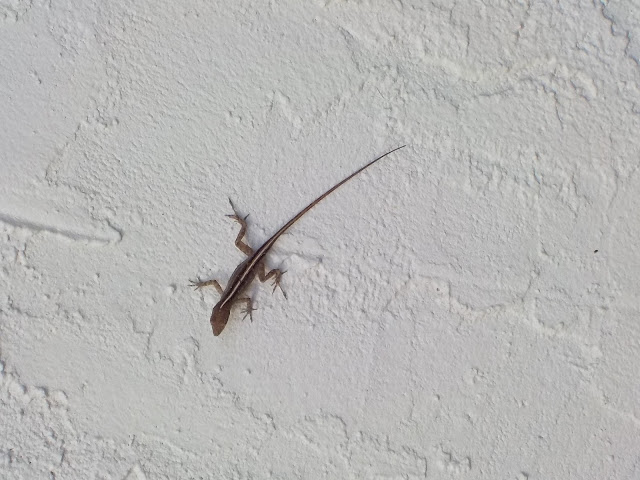
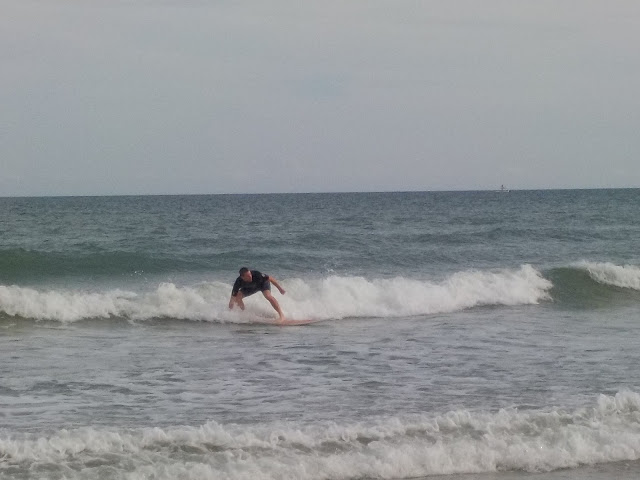
I enjoy visiting museums that provide information on the natural history of the area. And the interactive exhibits at KU Natural History Museum sound like fun for kids of all ages. I will keep this museum in mind for future visits in the area.
We find museums to be a great way to learn about the region we are visiting. We hope you make it to this one some day.
I’m sure I would enjoy a visit to the KU Natural History Museum, but I think I’d forego checking out the Bug Gallery! Thx for the great post.
It was fun, and the bugs were all caged. The rest of the museum would certainly hold your interest, though.
This is a good reminder of the great resources available to the public via our state universities. The KU Natioanl History Museum looks amazing.
Well said. Too many overlook this valuable resource.
My oldest daughter has beeen an employee of the university for over twenty years, my wife’s second degree is from KU, and my two oldest grandchildren are KUGraduates. We have visited Lawrence many times and have found the Museum of Natural History to be one of Lawrence’s many top flight attractions. You have reminded me that it is time to visit again.
Many people have visited the museum at least once, but forget all of the wonderful exhibits that can be found there. Glad we helped you rediscover this treasure.
I’ve been visiting this museum for the last 65 years and have watched it change and grow. I never get tired of it.
We have loved it for many decades, as well.